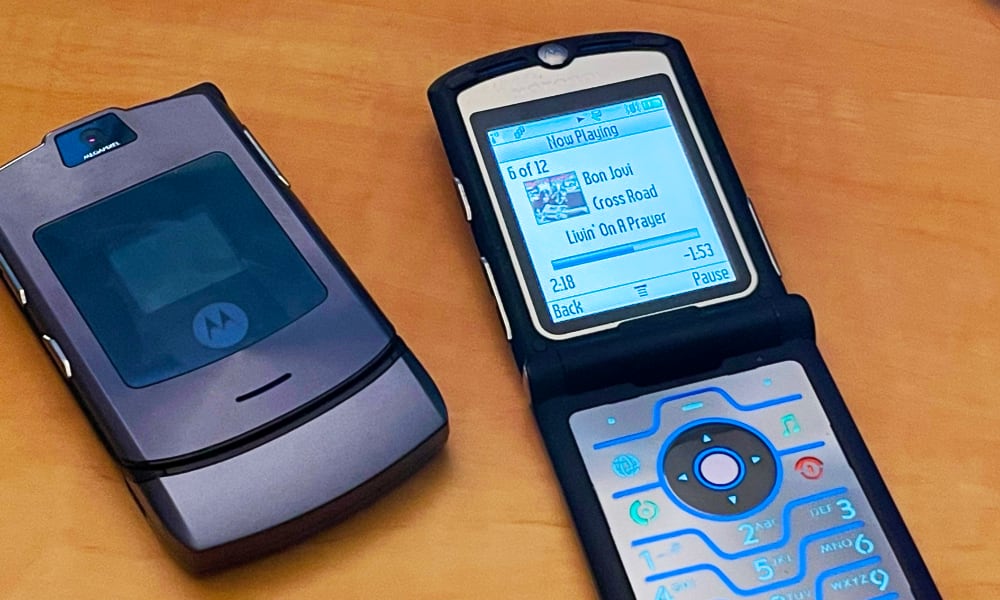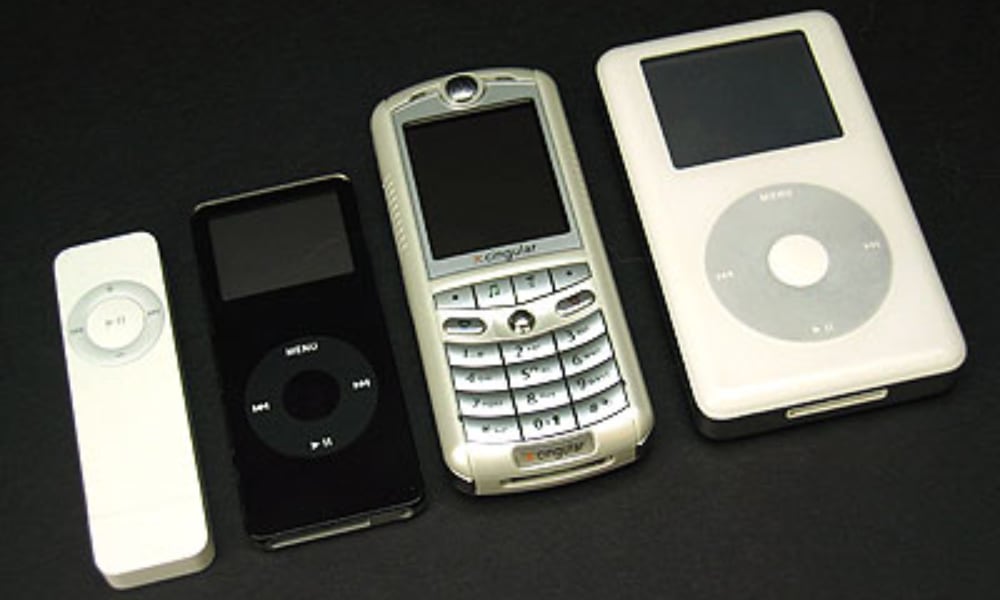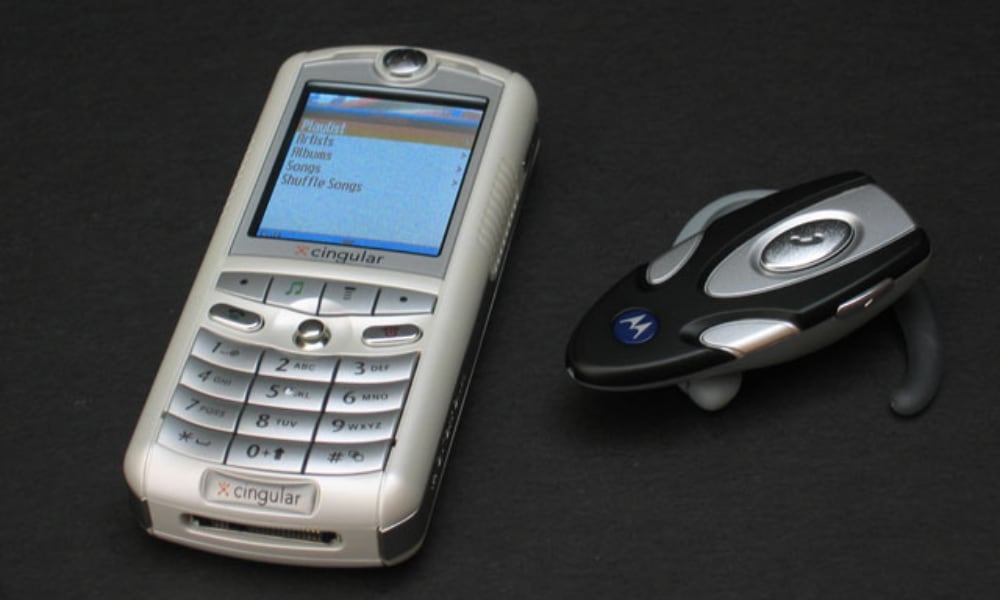Years Before the iPhone, Apple and Motorola Made a Pair of ‘iTunes Phones’
 Credit: Jesse Hollington
Credit: Jesse Hollington
Toggle Dark Mode
There’s no doubt that the iPhone has taken the world by storm since it was introduced in 2007, but what many people don’t know is that this actually wasn’t the first time Apple had its hand in releasing a mobile phone.
Over two years before anybody outside of Apple even knew the company was working on the iPhone, Apple partnered with Motorola to create the ROKR E1 — the so-called “iTunes Phone.”
This was a far cry from what would eventually become the iPhone, but it also generated a lot of enthusiasm for the very idea of Apple getting into the mobile phone market, and kicked off months of rumours and speculation of what an Actual Apple phone — an “iPhone” — would look like.
These first false starts, however, were more about melding iPod capabilities into Motorola’s hardware and software ecosystem. It’s unclear how much input Apple had into the overall design of the ROKR E1, but at the end of the day, it was ultimately still Motorola’s baby, and it showed.
The user interface was still Motorola, through and through, and the design was far from the elegance that folks would have associated with Apple. Even back in 2005, Apple’s designs were iconic and creative; Motorola’s, not so much.
From its too-familiar body to its numerous buttons, sluggish interface, incomplete integration of iTunes, and odd quirks, E1 is very nearly the opposite of an Apple-engineered product.Jeremy Horwitz, iLounge
Aside from promoting and marketing the new device, it seems Apple’s role was limited to providing the necessary support to build an iTunes media player into the phone. However, it’s not even entirely clear if Apple’s software engineers actually wrote the code for the iTunes player or simply provided the guidance necessary for Motorola’s developers to do so.
The iTunes Player on the ROKR E1 basically acted as a direct replacement for the file-based MP3 players that were much more common among many mobile phones of the day. Normally, users could dump a bunch of MP3 files into a folder on their phone’s memory card, and a rudimentary player on the phone would simply play what was in that folder.
A few of the better players would show the artwork and tags within the files, at least on the “Now Playing” screen, but most would just show a file and folder structure, so users had to make sure they used recognizable filenames for their songs. It was generally a horrible user experience all around.
Motorola’s built-in audio software is a joke. You’d have a better experience playing your MP3s with just your thumb and a Mountain Dew bottle.LC Angell, iLounge
For Motorola, integration with iTunes promised to change that, however. The player on the Motorola ROKR E1 had the same sort of user interface that would be familiar to any iPod owner. A top-level menu allowed users to browse through their library by Artists, Albums, or Songs, and when playing a track, the “Now Playing” screen would not only show actual track information, but even album artwork.
The ROKR E1 proved to be a popular enough idea that Motorola followed it up with an iTunes-ready version of its RAZR flagship. Once considered the epitome of style, the original RAZR V3 was an expensive premium phone designed to appeal to executives and other busy professionals, although eventually the price dropped to the point where it became accessible to most ordinary folks, too.
The slimness and sleekness of the RAZR V3 was eventually superseded by Apple, but that didn’t truly happen until the iPhone 4 came along, with its glassy, museum-piece design aesthetic.
The original RAZR V3 was followed by an improved V3i version, and while it’s easy to assume the “I” meant that it included iTunes support, it turns out that wasn’t true for all the V3i models. In fact, it became a bit confusing, as only one version of the V3i had iTunes, while the other one had Motorola’s comparatively awful Digital Audio Player. Since Motorola sold all of its phones through carriers, your choice of carrier determined which one you got.
Unfortunately, the ROKR E1 and the iTunes version of the RAZR V3i still had some pretty strange limitations that held them back from being true iPod replacements. This was probably by design, as the last thing Apple wanted to do was let Motorola cannibalize its iPod sales.
Despite its iPod-like user interface, the two iTunes Phones acted like a glorified iPod shuffle — and that’s basically how iTunes saw them as well. Users could dump on a bunch of songs, either by manually transferring them or using the same “autofill” feature offered for the iPod shuffle, but with one important exception: the Motorola phones were limited to 100 songs, regardless of how large your memory card was.
In his 2005 review of the original ROKR E1 for iLounge, Jeremy Horwitz points out that for the $350 price tag of Motorola’s phone, most users could buy an iPod nano and a better mobile phone, and still be able to fit both of them in the same pocket.
Even calling E1 an “iPod shuffle on your phone” might be generous. Despite its lack of a screen, the smallest iPod’s low price, greater song storage capacity, responsiveness to and simplicity of controls, and dual appeal as a simple USB storage device make it a decidedly superior product overall. And it doesn’t require a SIM card to play music. Jeremy Horwitz, iLounge
I owned two iTunes-capable RAZR V3i phones — I still have both in my collection, in fact — and I can honestly say that I never listened to music on them for anything more than curiosity and testing. Of course, I also owned several iPods, but even had I not, the RAZR V3i would have done little more than convince me to go out and buy one.
Ultimately, it would seem that Apple would like to forget the ROKR E1 and RAZR V3i ever existed in the first place. You won’t find any mention of them anywhere on Apple’s website, and perhaps even more telling is that while even a first-generation iPod shuffle is still recognized as a music player by Finder in macOS Monterey, these days the RAZR V3i simply appears as an external storage device.










